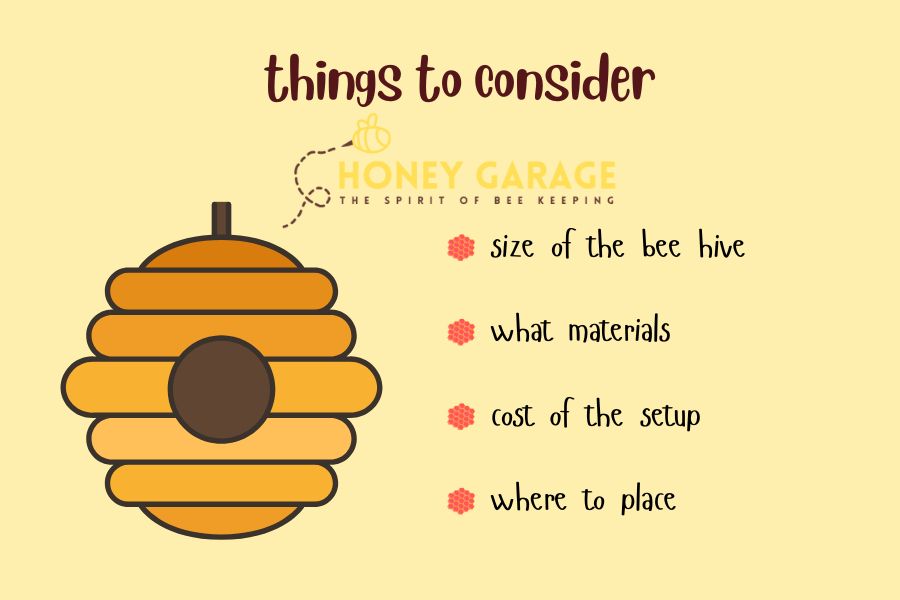Bee Hives
If you’re in the market or deciding to buy a beehive, there are a few things you need to know before taking your decision. This guide will provide you with all the information you need to make an informed decision and get the hive that’s best suited to your needs.
What to consider when buying a beehive
First of all, let’s take a look at the factors on which you will make the purchase decision:
- Size: The size of the beehive you are going to buy, will depend on how many bee colonies you are planning to keep. As well as the space available for your hive. Generally speaking, larger hives can house more bees but require more space and maintenance than smaller ones.
- Material: Beehives come in a variety of materials, such as wood, plastic, and metal. Each material has its own advantages and disadvantages, so it’s important to consider what will best suit your needs.
- Cost: Depending on the size and type of beehive you choose, costs can vary greatly. When making your purchase decision, make sure to factor in the cost of your hive and any additional equipment or supplies you may need.
- Location: Where you plan to keep your beehive is an important factor when selecting a hive. If you plan to place the hive outdoors, make sure it’s sturdy enough to withstand wind and rain. For indoor hives, consider the amount of space you’ll need to set up the hive.
- Type: There are several types of beehives available, including Langstroth hives, Top Bar hives, and Warre hives. Each type has its own benefits and drawbacks, so research each one before making your purchase decision.

By taking into account all of these factors, you can ensure you choose the best beehive for your needs. Remember to do plenty of research before making a purchase, and don’t forget to consider the cost and location of your hive as well.
The different types of beehives available
- Langstroth Hives: These are the most common type of beehive and feature removable frames that make it easy to inspect your bees and harvest honey. They come in a variety of sizes, making them suitable for both hobbyists and commercial beekeepers.
- Top Bar Hives: This type of hive has a single, long comb instead of removable frames. They require less maintenance than Langstroth hives but are more difficult to inspect and harvest honey from.
- Warre Hives: Warre hives feature vertically stacked boxes that provide bees with more room to move around in. They’re ideal for hobbyists looking for an easy-to-maintain hive.

By researching the different types of hives available and considering all the factors listed above, you should be able to select the right hive for your needs.
There are also, bee houses that are different than bee hives. For, example mason bee houses are used to accommodate mason bees in a particular area for pollinating flowers.
Tips for beginners who are just starting out with beekeeping
- Start small: If you’re just starting out, it’s best to start with a smaller hive that has fewer frames for inspection and honey extraction. This will help you get used to beekeeping without investing too much money upfront.
- Learn the basics: Make sure you understand the basics of beekeeping before getting started. Read up on the topics of hive management, health and safety, pest control, and honey harvesting.
- Get to know your bees: Spend some time getting to know your bees before getting started with any activities such as inspection or honey extraction. This will help you become familiar with their behavior and learn how to properly handle them.
- Have the right equipment: Make sure to have all the necessary tools and supplies before you start beekeeping, such as a smoker, hive tool, protective gear, and hive feeders.
By following these tips, you should be able to get started with beekeeping safely and successfully.
Conclusion
Beekeeping can be a fun and rewarding hobby, but it’s important to do your research before getting started. By considering the different types of beehives available and understanding the basics of beekeeping, you can select the right hive for your needs and get started on this exciting new journey. We hope you enjoy it!

